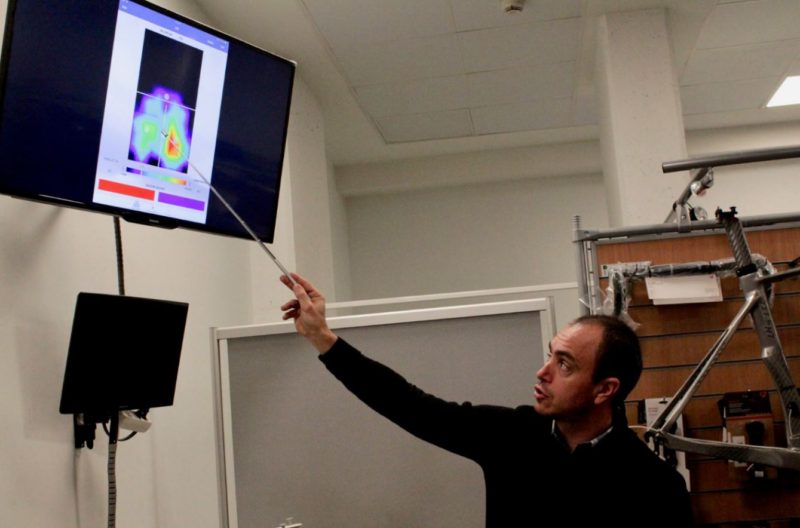Retailers of service: How the modern bike shop can monetise non-traditional avenues
We won’t dwell too long on the now well-established adaptation challenges facing bike retail, but the question remains is the term IBD now outdated? Jon Iriberri, CEO at Custom4.Us and bike fitter to the pro tour writes on how the retailer can lead on service led money-spinners…
Cycling retail faces ongoing difficulty in fine-tuning its place in the market. With many seemingly conflicting sources of advice and expertise on the best route forward to meet the age of internet shopping head on one thing is for certain, we must web-proof our businesses.
There are suggestions that many shops have responded to this trend by refocusing and becoming retailers of service; think pro fitting, mechanics and other skills-driven offshoots. This has come at the expense of the sale of product, with retailers deeming themselves unable to compete against the internet giants around the globe, many of which are gobbling others up to become yet larger animals.
Viewed from this perspective, bike fitting could be a good opportunity to increase a shop’s invoicing by offering a new (or maybe reinventing the classic systems) service that provides the expertise customers cannot buy online. Any parts or upgrades provided as part of that service are an added bonus and opportunity for profit.
The Business
Let’s imagine that I want to buy a helmet. With an RRP of, say, £200 including VAT, we can hypothesize the cost to the retailer will be around £100 + VAT. So, if we assume I pay 20% taxes (please forgive variations between countries), my retailer margin is £60. From this ‘profit’ I still have to cover storage, the possibility of not selling at all, shelf-life (new season products coming soon), potential discounts for frequent customers, friends or sponsored individuals. It’s not a lot of money in real terms.
Meanwhile, the computer-literate public (and let’s be honest most are now) see this helmet on the Internet for €120. That’s a 40% discount on my price. The internet retailer may pay less taxes and receive a further 5-10% off trade price as they’re such a big customer. The profit margin on the Internet is narrower (as you’d expect with 40% off RRP!), but the cost of business overheads is much lower due to economies of scale and, I’m choosing my words carefully here, their tax structures are less clear (I often wonder why I don’t pay taxes when I receive something from China).
In conclusion, few products can be sold competitively in store, particularly when the internet can still offer same stock, availability, delivery, sizing and warranties at a reduced price.
So, what to do?
Following on from the analysis above, it makes sense for bricks and mortar shops to focus their sales efforts on providing things that cannot be offered or provided by the Internet. This could be a combination of sizing, assessing, fitting demonstrations, trials and testing. These services should be charged for, with any product involved also offering additional opportunities for profit. One of the toughest experiences as a retailer is to have customers asking to test shoe sizes, finding their correct size, then leaving the shop (and in some particularly rude cases, use their smartphone in store) to buy online. The solution here is not just to charge for the sizing, or opportunity to test sizes (happening today in some shops) but to change the selling paradigm to become a service shop.
Every service adding value or benefit to the customer should be charged. From shoe fitting, all the way up to full bike fit and custom bike or frame building. This leap for our retail model is difficult for many retailers, I know, but realistically it is the only way to provide long-term survival in a digitalised era.
Most of the shops I have been visiting over the last 15 years are now more progressively based on retailing the mechanics’ time rather than selling bikes. Many even lose money on bike sales, which they recoup (with varying levels of success, it’s true) by selling services and upgrades. This is another reason why it’s so important to make sure your accounts highlight the different streams of income you are receiving.
What can be fitted (aka – what can I charge for)?
Saddles
Pressure mapping technology and a simple stationary bicycle, or set of rollers, gives your store the possibility of pairing customers to their perfect saddle in-store. Test and demo saddles are a nice tool for work, but this service is not free. You charge based on the product’s retail price, or you charge as a standalone service if the customer decides not to buy with you.
Also read: Bike saddles – does the industry want an easy answer to a complex problem?

Shoes/insoles
Thermo moldable insoles give a great opportunity of customising the shoe for foot pressures. This process is harder to do at home with your oven, but easy in the shop with expert guidance. If an insole cannot be customised, (for example if there is only one model/size available on the market) the customer will find it in the e-shop very easily, and probably cheaper.
Find a good cycling shoe supplier who can sell you what you need as you need it, because buying in bulk and trying to guess which of the many hundred SKUs will sell is bad business practice. Unsold pairs will eat the hard-earned profit of the sold ones. So an optimum delivery policy of the shoe brand is the first main decision of your shoe supplier. Have a good model, with access to every size from UK5 to 14, and then simply reorder to restock.
Further reading: The current state of the cycling shoe market.
Clothes
Though an area of increasing decline in many bike shops, in square footage terms, clothing obviously presents a further opportunity to size up a customer in store and explore chargeable methods on the experience. Perhaps you’ll allow customers to try garments in store on a turbo trainer in order that they feel the garments in action, not just stationary.
Bicycles
Or more specifically, fitting and servicing

Some advice about including bike fitting in the shop
The invested money must be related to the expected income of this service.
If I charge £150 for a fit and I expect to do 50 in the first year, my investment in fitting tech/products should be around 33% of this total amount. (£150 x 50 = £7,500. My 33% investment tallies to £2,475).
In future years I can add some new materials or technologies to my fitting practice, which in turn adds extra value and allows me to charge more.
The tendency to expend huge amounts of money at the outset of a fitting business (which should be a longer-term economic operation and organic growth) reveals a deep ignorance of the fitting business and also how to build customer confidence. This is an attitude based on the expectation that tech wizardry is going to induce the public to flock to your practice. Obviously hi-tech claims are going to help encourage them a little, but they are never the foundation of any successful long-term fitting business.
High tech equipment, like the Internet, does not help you build a rapport with your customers or provide the sort of warm individual service worthy of their money. That must come from your staff, so train them well and ensure that you’re all well versed on the objectives of the business’ service departments.



